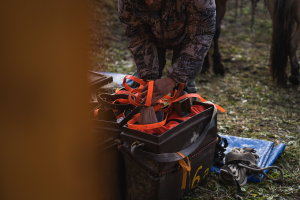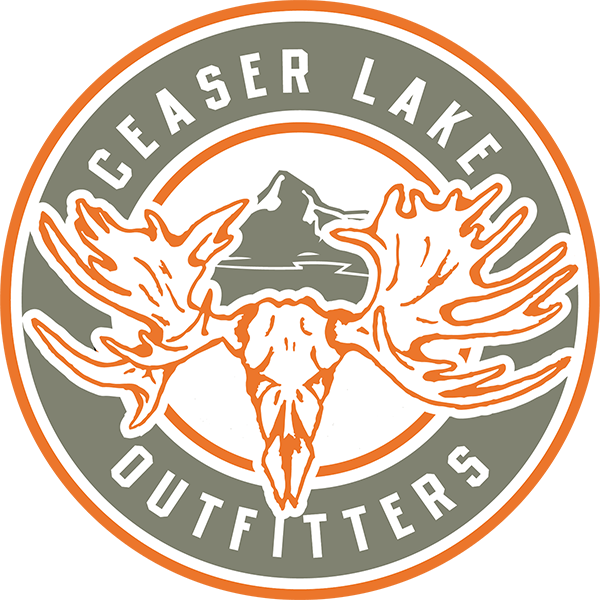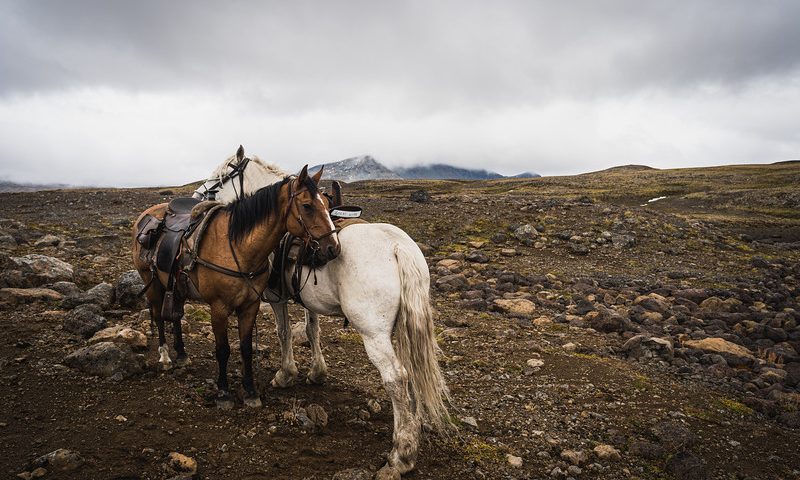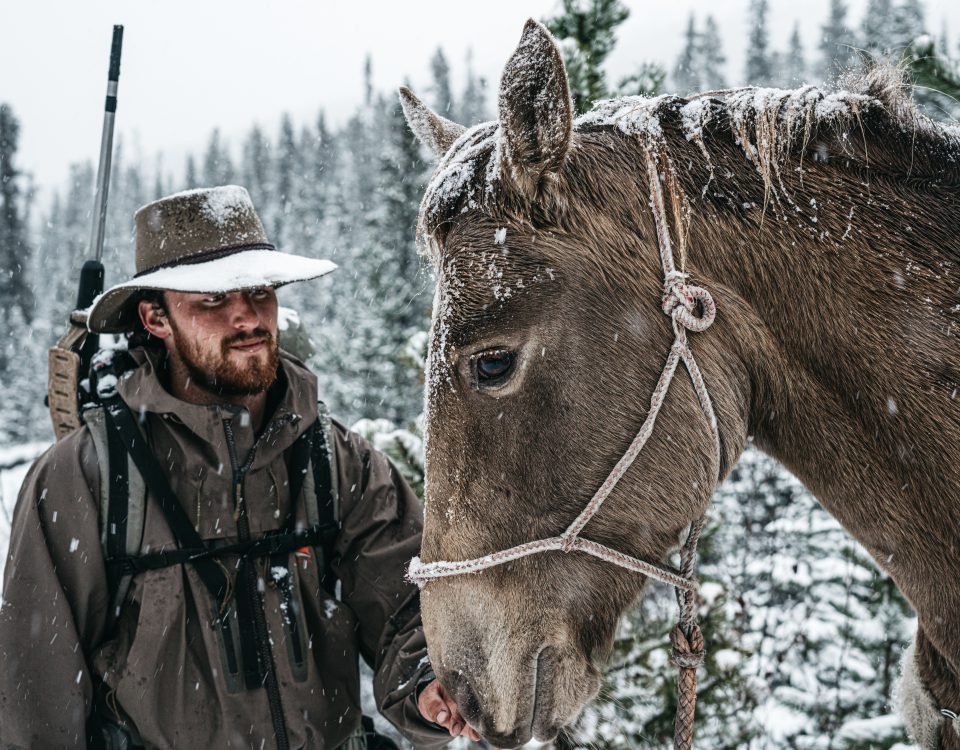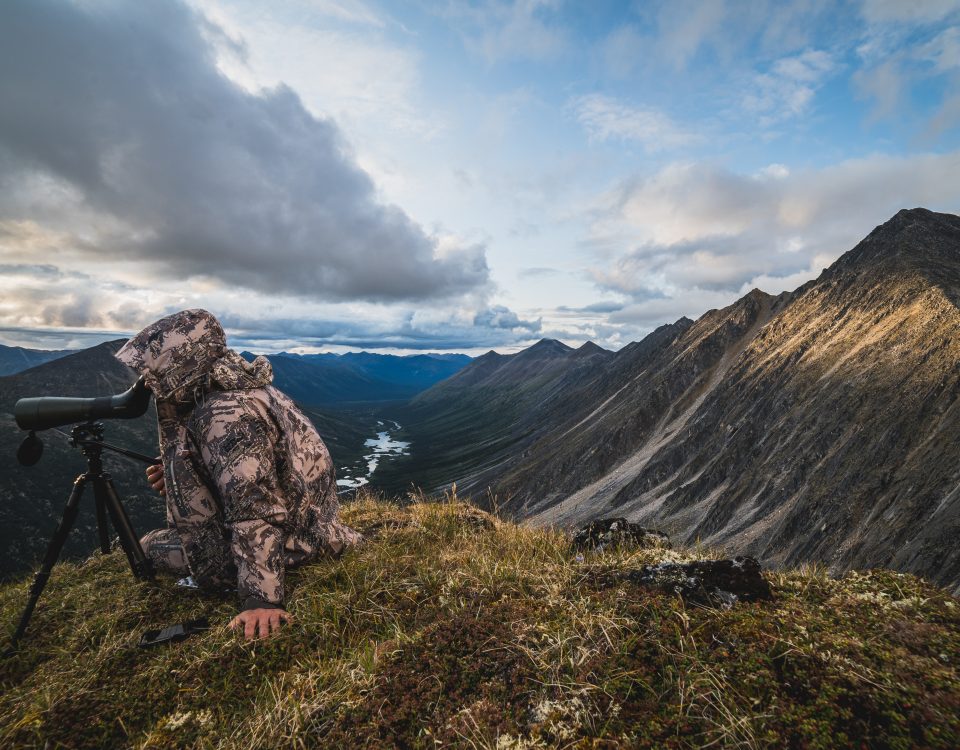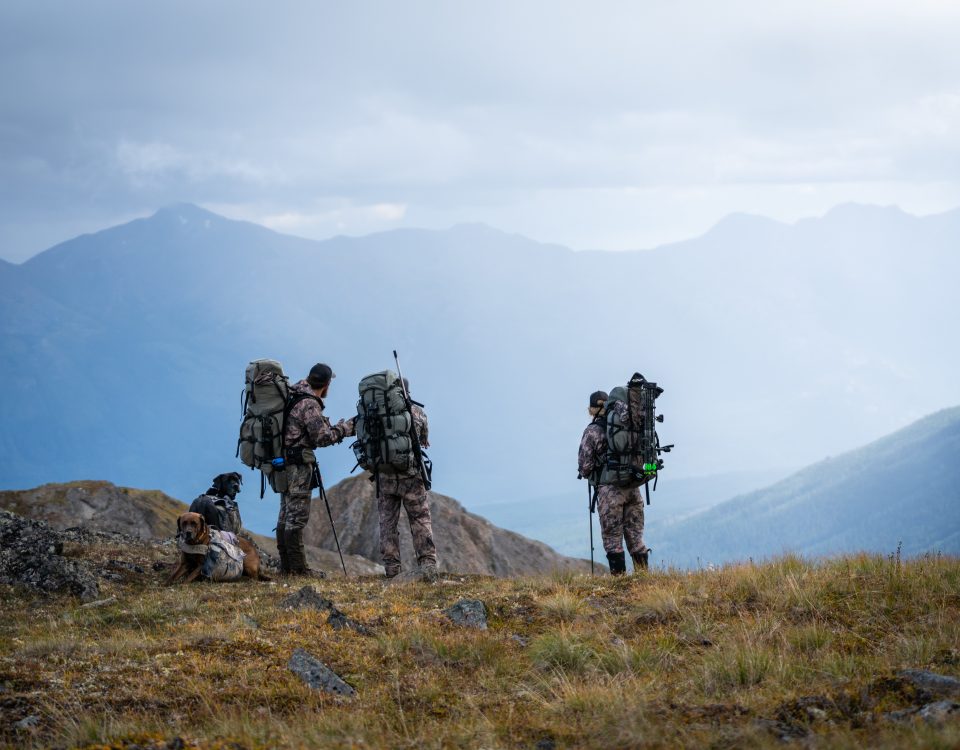- BOOK YOUR HUNT NOW!
- Dustin (250) 919-0184
- Colbie (780)826-0416

Hunting The North Where Adaptation Is Key
May 25, 2020
Seasonal Conditions, Chess Boards And Moose Just Go Together
June 8, 2020
Mountain horses are the unsung heroes of the outfitting industry.
We travel great distances that are untouched by development of modern landscapes in our guide area. We constantly are in need to have supplies carried to and from locations, and without the use of ATV’s or other modern motorized vehicles for much of it, horses are our biggest transportation asset on the ground.
Anyone that owns and uses horses can relate, they can be wonderful additions to the crew, but they also 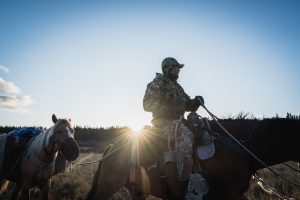 come with minds of their own. A horse that can pull a shift as a pack horse as well as a riding horse is a double asset in the outfitting world. Often times, we like to bring horses nearing maturity to the mountains for them to learn to adapt to their fall surroundings and learn the ropes of what is required of them. Like us, they work long days, and have to be physically fit for the tasks ahead. They scale mountainsides, traverse through bog lands, cross rivers, and do it all with you or cargo on their backs. There is no special recipe for what breed a mountain horse can be, but if a pedigree could be measured on the size of their ‘heart and willingness to try’, these horses would take the blue ribbon.
come with minds of their own. A horse that can pull a shift as a pack horse as well as a riding horse is a double asset in the outfitting world. Often times, we like to bring horses nearing maturity to the mountains for them to learn to adapt to their fall surroundings and learn the ropes of what is required of them. Like us, they work long days, and have to be physically fit for the tasks ahead. They scale mountainsides, traverse through bog lands, cross rivers, and do it all with you or cargo on their backs. There is no special recipe for what breed a mountain horse can be, but if a pedigree could be measured on the size of their ‘heart and willingness to try’, these horses would take the blue ribbon.
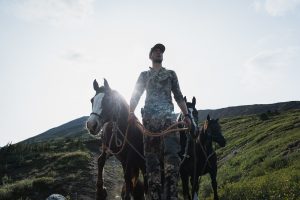
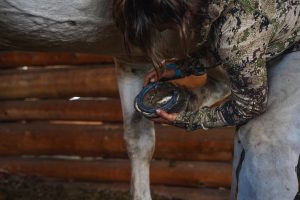
Most of the horses are what we would call a ‘heavy-horse’ mix, usually a thicker boned specimen with draft-horse sized features. Finer boned horses that you see working ranches or in the arena are generally tough in their own regard, but usually can’t hold weight like these crossbred mountain brumbies. When it comes to an animal that can keep its physical strength, body condition, and has the ability to work as hard as these horses, no fancy breed can compete.

Running a horse outfit is a year-round operation. Unlike any other mode of motorized transportation, they need to be cared for and housed all year round. Just like us, they can become ill, find themselves admits an injury, or just have bad days. It’s knowing how to care for them and becoming familiar with each of their personalities that makes for a team dynamic even between human and horses on a crew.

A horse needs to eat between 1.5 to 3 % of its body weight a day to maintain themselves. On a 1,200 pound mountain horse, this means that they need to eat 30 pounds of food per day. Because we are a long way from the nearest agricultural land, this means our horses find the bulk of their food foraging when we let the go a night. At times when we stop to glass on the trail, resting them in a meadow where they can fill their bellies helps as well. For horses that aren’t used to the mountain cuisine, it can take a bit to adjust and for them to learn what to eat. Some seasoned mountain horses tend to eat the tender willow leaves and new growth, while developing a taste for ‘mares tail grasses’ and other northern forage. Bottom line, We need snacks, they need snacks too.

As the season draws on and the northern grass begins to lose its nutritional value, the horses need to eat more to sustain their condition. While manners back home in the pasture usually don’t allow a horse to grab a bite during their day shift, for our mountain horses it is critical to keep them in working shape, so we let them graze as much as they can. We supplement them towards the later part of the year with compressed alfalfa cubes as well as a ration of grain in the morning to help entice them to come back to camp with the wrangler, and to keep up their nutrition.

When we are choosing our camp locations, a great deal of thought comes down to the proximity of meadows, and availability to get water. Of course it also is critical to have access to an airstrip or lake where a plane can land, and sticking close to areas we are hunting. Good stockman-ship comes into play with selecting the right camp spots and utilizing grazing locations as the horses are settled into various hunt locations.
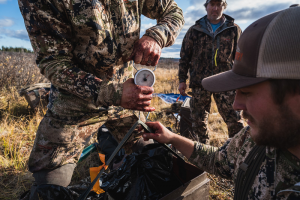
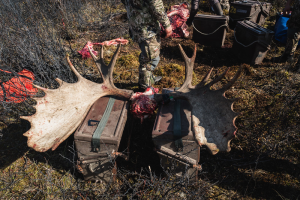
A horse can pack up to 20% of their own body weight. With the average horse weight placed around 1,200 pounds, that puts their share of the work load at 240 pounds. In British Columbia, we lawfully take every piece of meat or ‘edible’ portion on game species harvested. On sheep that can be upwards of 200 pounds with the head and cape, but for a caribou or moose, that number grows exponentially. A caribou can boast up to 300 plus pounds, while a moose can range from 500 to 700 pounds of deboned meat and cape weight. When the horses can help carry that load it significantly takes the backbreaking work off of our shoulders and help share it with our much stronger equine help. While a guide can usually disperse the sheep meat between his pack, the wranglers and yours, one packhorse makes easy work of a caribou harvest. For a moose, we tend to rely on up to three pack horses to help us get the meat and trophy from its finally resting place on the hoof to our plane pick up location.
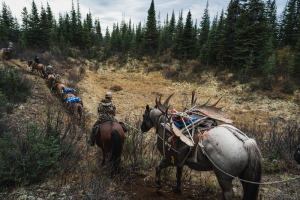
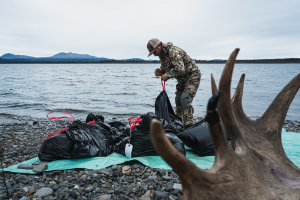
As much as they make us laugh, they can be clever at times too… especially when they learn the knack of how to silence their bells from chiming while a wrangler circles a meadow, straining to listen for bells in the dark. They all come with their own quirks, but it helps keep our lives interesting, and it sure as heck beats having to lug all of our equipment and harvests around by ourselves. But for what few short comings they seem to have at times, we really couldn’t do our job without them.

So the next time you hunt with us, be sure to give your four-legged transport an extra scratch. They work hard for you, and help get you in the spots you need to be for your horseback hunting adventure.
-The Team at Backcountry BC and Beyond

